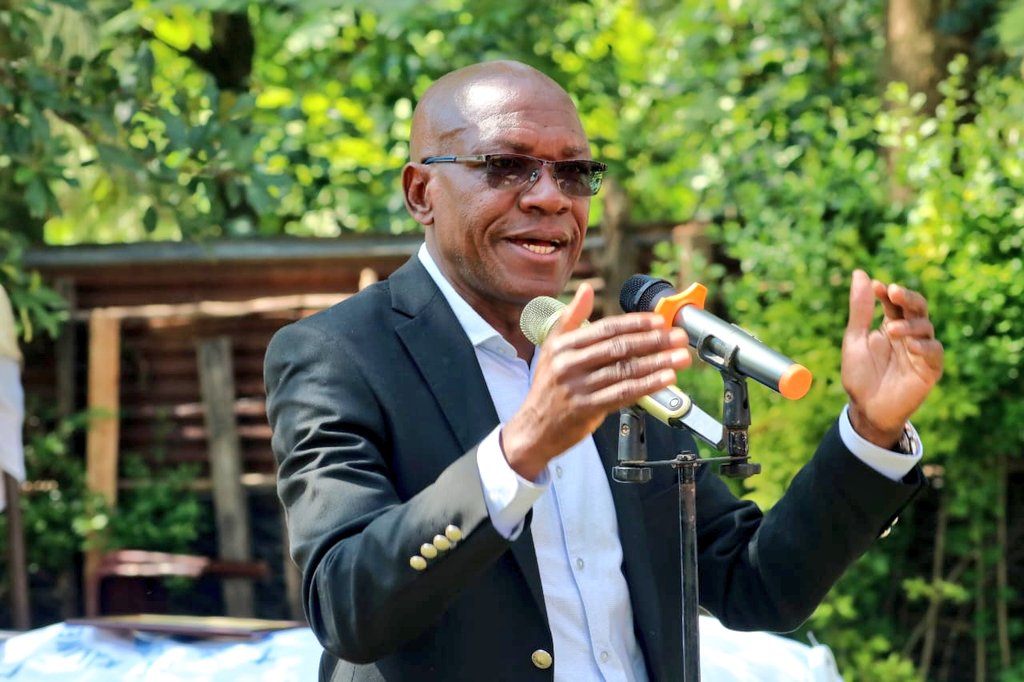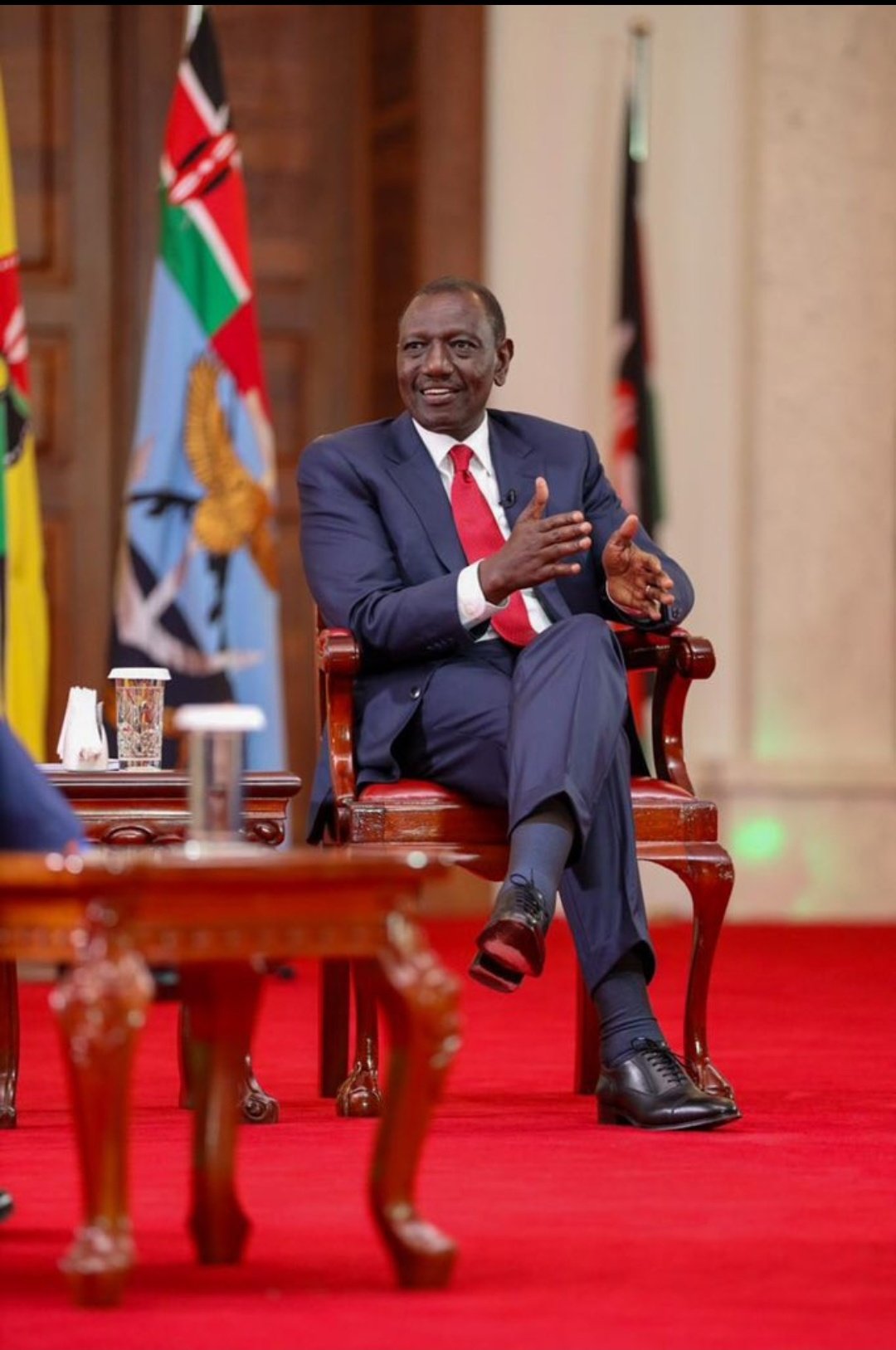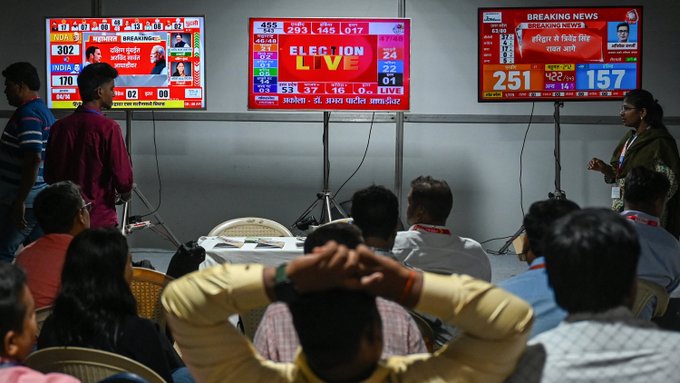
In recent weeks, Kenya has been gripped by a wave of protests that have shaken the nation’s political landscape. At the center of this unrest is a complex web of issues, including allegations of corruption, poor governance, and economic hardship. The situation has escalated to the point where prominent political figures, such as Senator Boni Khalwale, have directly confronted President William Ruto with the concerns of the protesters. This blog post delves into the current state of affairs in Kenya, exploring the causes of the protests, the key players involved, and the potential implications for the country’s future.


The Spark That Lit the Fire: Understanding the Trigger
The Finance Bill: A Catalyst for Unrest
While the roots of the current protests run deep, the immediate trigger appears to have been the controversial Finance Bill. Senator Khalwale, in his message to President Ruto, made it clear that this piece of legislation was merely the spark that ignited a powder keg of long-standing grievances. The bill, which proposed new tax measures, struck a chord with a population already struggling with the rising cost of living.
However, it’s crucial to understand that the Finance Bill itself is not the sole cause of the unrest. Rather, it serves as a symbol of broader issues that have been simmering beneath the surface of Kenyan society for years. The protesters view the bill as yet another example of government policies that they believe prioritize fiscal targets over the well-being of ordinary citizens.
Economic Context: Balancing Act Between International Obligations and Domestic Needs
To fully appreciate the context of the Finance Bill and the subsequent protests, we must consider the economic pressures facing Kenya. President Ruto finds himself in a precarious position, attempting to balance the demands of international lenders, such as the International Monetary Fund (IMF), with the needs of the Kenyan people.
The IMF and other international financial institutions have been pushing for deficit reduction and fiscal responsibility. These demands often translate into austerity measures and tax increases, which can disproportionately affect the most vulnerable segments of society. President Ruto’s administration, like many before it, is tasked with the challenging job of meeting these international obligations while also addressing the pressing concerns of a population grappling with economic hardship.
This balancing act highlights a fundamental tension in Kenya’s economic policy: how to achieve fiscal stability and attract international investment without exacerbating inequality and poverty. The protests suggest that many Kenyans believe the current approach is failing to strike the right balance.
The Heart of the Matter: Corruption, Disgovernance, and Impunity
Generation Z: The Face of Discontent
According to Senator Khalwale, the protests are being driven primarily by Kenya’s younger generation, often referred to as Generation Z. These young Kenyans, born roughly between the mid-1990s and early 2010s, have come of age in an era of rapid technological change and increased global connectivity. They are also the generation that has inherited the consequences of decades of perceived mismanagement and corruption.
The anger of this generation stems from three primary sources, as highlighted by Khalwale:
- Disgovernance: This term encompasses a range of issues related to poor leadership and ineffective administration. Young Kenyans are frustrated with what they see as a lack of vision, inadequate public services, and a failure to address the country’s most pressing problems.
- Corruption: Graft has long been a scourge in Kenyan politics and public life. Generation Z, armed with access to information and a strong sense of justice, is increasingly intolerant of the endemic corruption they perceive at all levels of government.
- Impunity: Closely related to corruption, the issue of impunity refers to the perception that those in power can act without fear of consequences. This erosion of accountability has led to a deep-seated mistrust of institutions and leadership.
The Persistence of Systemic Issues
The fact that these issues persist despite changes in leadership underscores their systemic nature. Kenya has seen multiple transitions of power since its return to multi-party democracy in the 1990s, yet the core problems of corruption, poor governance, and lack of accountability remain largely unaddressed.
This persistence suggests that the issues run deeper than any single administration or political party. They are embedded in the very structures and culture of governance in Kenya. Addressing these challenges will require more than just a change of leadership; it will necessitate a fundamental reimagining of how power is exercised and held accountable in the country.
The Evolution of Protest: From Online Outcry to Street Demonstrations
Digital Roots: The Power of Social Media
The current wave of protests in Kenya has its origins in the digital realm. What began as an online outcry over tax increases quickly evolved into a nationwide movement against corruption and misgovernance. This transition from digital to physical protest highlights the power of social media and online platforms in modern political movements.
Social media has provided a space for Kenyans, particularly the younger generation, to voice their grievances, share information, and organize collective action. Platforms like Twitter, Facebook, and WhatsApp have become vital tools for mobilization, allowing protesters to coordinate their efforts and amplify their message.
The rapid spread of information through these channels has also made it more difficult for the government to control the narrative surrounding the protests. Images and videos of demonstrations and clashes with police are shared in real-time, bypassing traditional media gatekeepers and presenting a direct, unfiltered view of events on the ground.
From Keyboards to Streets: The Escalation of Protests
As the online movement gained momentum, it inevitably spilled onto the streets. What started as digital expressions of discontent transformed into physical demonstrations across the country. This transition marked a significant escalation in the protest movement, raising the stakes for both the protesters and the government.
The street protests have brought with them new challenges and risks. Clashes between demonstrators and law enforcement have resulted in injuries and, tragically, loss of life. These confrontations have further fueled the anger of protesters and drawn international attention to the situation in Kenya.
The evolution from online to street protests also reflects a growing frustration with the perceived ineffectiveness of digital activism alone. While social media provides a platform for expression, many protesters feel that physical demonstrations are necessary to force meaningful change and hold leaders accountable.
The Government’s Response: Attempts at Dialogue and Calls for Restraint
President Ruto’s Outreach Efforts
In the face of mounting protests, President William Ruto has made attempts to engage with the demonstrators and address their concerns. These efforts at dialogue represent a recognition of the seriousness of the situation and the potential threat it poses to political stability.
However, according to reports, these attempts at engagement have been largely rebuffed by the protest movement. The rejection of Ruto’s appeals for dialogue suggests a deep-seated mistrust in the government’s willingness or ability to effect real change. It also indicates that the protesters are not satisfied with mere promises or superficial gestures; they are demanding concrete actions and fundamental reforms.
Calls for Calm and a Return to Peace
As the protests have intensified and turned violent in some instances, the authorities have issued appeals for calm and a return to peace. These calls for restraint reflect the government’s concern about the potential for further escalation and the risk of widespread unrest.
However, these appeals have been met with skepticism by many protesters, who view them as attempts to quell dissent without addressing the underlying issues. The tension between the government’s desire for stability and the protesters’ demands for change highlights the delicate balance that must be struck in addressing political grievances while maintaining public order.
The Protesters’ Demands: Beyond Dialogue to Concrete Action
Resignation Calls: A Drastic Demand
Perhaps the most dramatic demand emerging from the protest movement is the call for President Ruto’s resignation. This extreme position underscores the depth of frustration and loss of faith in the current administration among a significant segment of the population.
The demand for resignation represents a rejection of the entire system of governance that Ruto embodies. It suggests that some protesters view the problems as so entrenched and the current leadership as so compromised that only a complete change at the highest level of government can bring about the reforms they seek.
However, it’s important to note that calls for resignation are often more symbolic than practical. They serve to express the intensity of dissatisfaction rather than offering a realistic path forward. The constitutional and political realities of Kenya make an immediate resignation highly unlikely.
Anti-Corruption Measures: A Central Demand
At the heart of the protesters’ demands is a call for decisive action against corruption. This focus on anti-corruption measures reflects the centrality of this issue in Kenya’s political discourse and its perceived role in perpetuating many of the country’s problems.
Specific demands in this area might include:
- Prosecution of corrupt officials: Protesters are calling for investigations into allegations of corruption and the prosecution of those found guilty, regardless of their position or political connections.
- Asset recovery: There are demands for the government to more aggressively pursue the recovery of assets acquired through corrupt means, both domestically and internationally.
- Strengthening of anti-corruption institutions: Protesters want to see more resources and independence given to bodies like the Ethics and Anti-Corruption Commission (EACC) to enable them to effectively combat graft.
- Transparency measures: Calls for increased transparency in government operations, including open contracting and public declaration of assets by officials, are common among the protesters.
Economic Relief: Addressing the Cost of Living Crisis
While political reforms are a key focus, the protesters are also demanding immediate action to address the economic hardships facing many Kenyans. These economic demands include:
- Reduction in fuel prices: High fuel costs have a ripple effect throughout the economy, affecting transportation, food prices, and overall inflation.
- Food subsidies: With many Kenyans struggling to afford basic necessities, there are calls for government intervention to make staple foods more affordable.
- Job creation initiatives: Unemployment, particularly among the youth, is a major concern. Protesters are demanding concrete plans to stimulate job growth.
- Review of tax policies: The Finance Bill that initially sparked the protests remains a point of contention, with demands for a comprehensive review of tax policies to ensure they don’t disproportionately burden the poor and middle class.
The Role of Civil Society and Activists
Veteran Voices: John Githongo’s Perspective
The involvement of experienced anti-corruption activists like John Githongo adds weight and credibility to the protest movement. Githongo, who has a long history of fighting graft in Kenya, has expressed skepticism about the government’s willingness to take concrete action in response to the protesters’ demands.
His assessment that there is no indication of the government’s readiness to fire corrupt officials or implement substantial reforms speaks to the entrenched nature of the problems facing Kenya. Githongo’s voice serves as a bridge between the younger protesters and the established civil society organizations that have been fighting for transparency and accountability for decades.
The Broader Civil Society Landscape
Beyond individual activists, Kenya has a vibrant civil society sector that plays a crucial role in advocating for good governance, human rights, and social justice. These organizations, which include NGOs, community groups, and professional associations, have been instrumental in:
- Monitoring government actions: Civil society organizations often serve as watchdogs, tracking government policies and expenditures.
- Providing alternative narratives: They offer perspectives and analyses that challenge official government positions and media narratives.
- Mobilizing citizens: Many civil society groups have extensive networks that can be activated for advocacy and protest.
- Legal advocacy: Some organizations specialize in using the legal system to challenge government actions and protect citizens’ rights.
The interplay between these established civil society actors and the more spontaneous, youth-driven protest movement is shaping the nature and direction of the current unrest in Kenya.
International Implications and Responses
Regional Stability Concerns
The ongoing protests in Kenya have implications that extend beyond its borders. As one of the largest economies in East Africa and a key regional player, political instability in Kenya can have ripple effects throughout the region. Neighboring countries and regional bodies like the East African Community (EAC) are closely monitoring the situation, aware that prolonged unrest could impact trade, diplomatic relations, and regional security.
International Community’s Stance
The international community, including major powers and international organizations, has also been paying close attention to the developments in Kenya. Their responses have generally focused on:
- Calls for dialogue: Many international actors have urged both the government and protesters to engage in peaceful dialogue to resolve their differences.
- Emphasis on human rights: There have been expressions of concern about the use of force against protesters and calls for respect for the right to peaceful assembly.
- Economic considerations: International financial institutions and donor countries are watching closely, as continued unrest could affect Kenya’s economic stability and investment climate.
- Diplomatic engagement: Some countries may be engaging in quiet diplomacy, using their relationships with Kenyan officials to encourage a peaceful resolution to the crisis.
The Path Forward: Challenges and Opportunities
Short-Term Crisis Management
In the immediate term, the Kenyan government faces the challenge of de-escalating tensions and preventing further violence. This may involve:
- Restraint in law enforcement: Ensuring that police responses to protests are proportionate and respect human rights.
- Opening channels of communication: Establishing credible platforms for dialogue with protest leaders and civil society representatives.
- Addressing immediate economic concerns: Considering short-term measures to alleviate the cost of living crisis and demonstrate responsiveness to citizens’ needs.
Medium-Term Reform Agenda
Looking beyond the immediate crisis, there is a need for a comprehensive reform agenda that addresses the root causes of the unrest. This could include:
- Anti-corruption initiatives: Implementing robust measures to combat graft, including strengthening investigative and prosecutorial capacities.
- Governance reforms: Enhancing transparency, accountability, and citizen participation in governance processes.
- Economic policies: Developing and implementing policies that promote inclusive growth and address inequality.
- Youth empowerment: Creating opportunities for young Kenyans to participate meaningfully in the political and economic life of the country.
Long-Term Structural Changes
Ultimately, addressing the deep-seated issues raised by the protesters will require long-term structural changes in Kenyan society and politics. This might involve:
- Constitutional reforms: Considering changes to the structure of government to enhance accountability and reduce the concentration of power.
- Cultural shift: Fostering a culture of integrity and public service among political leaders and civil servants.
- Education and awareness: Investing in civic education to create a more informed and engaged citizenry.
- Economic transformation: Pursuing policies that diversify the economy, create sustainable jobs, and reduce dependence on external debt.
Conclusion: A Crossroads for Kenya
The current protests and the political tensions they have unleashed represent a critical juncture for Kenya. The country stands at a crossroads, facing choices that will shape its future for years to come.
On one hand, there is the risk of further escalation, violence, and political instability if the underlying grievances are not adequately addressed. This path could lead to economic disruption, social unrest, and a erosion of Kenya’s democratic institutions.
On the other hand, the current crisis presents an opportunity for genuine reform and renewal. If handled wisely, the energy and demands of the protest movement could be channeled into positive change, leading to stronger institutions, more responsive governance, and a more equitable economic system.
The message delivered by Senator Boni Khalwale to President Ruto encapsulates the urgency and complexity of the situation. It highlights the deep-seated frustrations of a new generation of Kenyans who are no longer willing to accept the status quo of corruption, misgovernance, and impunity.
As Kenya navigates this challenging period, the actions of its leaders, the resilience of its institutions, and the engagement of its citizens will determine whether this moment of crisis becomes a catalyst for positive transformation or a descent into prolonged instability. The world watches and waits, hoping that Kenya can chart a path forward that addresses the legitimate concerns of its people while preserving the gains it has made in democratic governance and economic development.
The coming weeks and months will be crucial in shaping Kenya’s trajectory. Will the government find a way to meaningfully engage with the protesters and implement substantive reforms? Can the energy of the youth-led movement be harnessed constructively? How will Kenya balance the demands of its citizens with the pressures of international economic obligations?
The answers to these questions will not only determine the immediate future of Kenya but will also send important signals about the state of democracy and governance in Africa as a whole. As one of the continent’s most influential countries, Kenya’s ability to navigate this crisis peacefully and emerge with stronger institutions could set a powerful example for other nations facing similar challenges.
In the end, the true test will be whether Kenya can transform the current moment of crisis into an opportunity for renewal and progress. The path forward will require wisdom, courage, and compromise from all sectors of Kenyan society. It will demand a renewed commitment to the principles of democracy, accountability, and inclusive development that have long been the aspiration, if not always the reality, of Kenya’s national project.
As the protests continue and the political








